How to Easily Get Gorilla Glue off Your Skin
-

- Last updated:
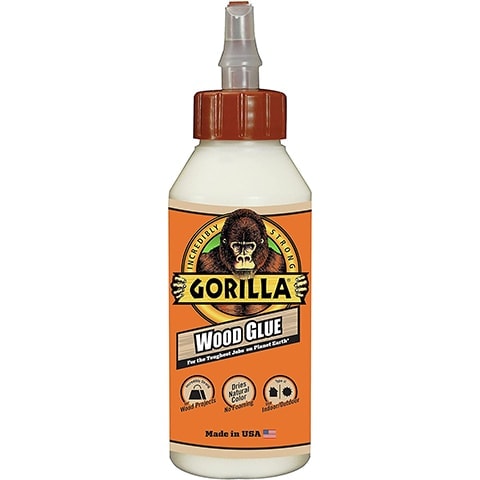

If you have a mess made with any kind of Gorilla Glue, you know it can be quite challenging to clean up, and when you get it on your skin, it can seem impossible to remove. Gorilla Glue is one of the strongest glues on the market, but it’s designed for easy clean up if you know what you are doing. We have created a step by step guide for you to use to clean up any spills should you accidentally get some on you.
Keep reading while we give you some tips to get Gorilla Glue off your skin, as well as how to remove it from a few other surfaces as well.
- Related Read: Gorilla vs Super vs Krazy Glue: Which is Better?

The 4 Steps to Remove Gorilla Glue From Your Skin
Here are the four steps to take to get Gorilla Glue off you.
1. Clean Up
Gorilla Glue dries extremely quickly, so it’s important to try to wipe up any excess before it dries. We recommend keeping paper towels or a clean rag close by while you work with any Gorilla Glue, wiping up any accidental spills immediately. Quickly cleaning up spills is the easiest and most effective way to remove the glue.
2. Wash
With the excess glue removed with a paper towel while it’s still wet, you can often pick up any residue left behind with cold, soapy water. Like the towel, you should also keep a supply of soapy water close by while you work, so it is quickly accessible if you have any accidents.
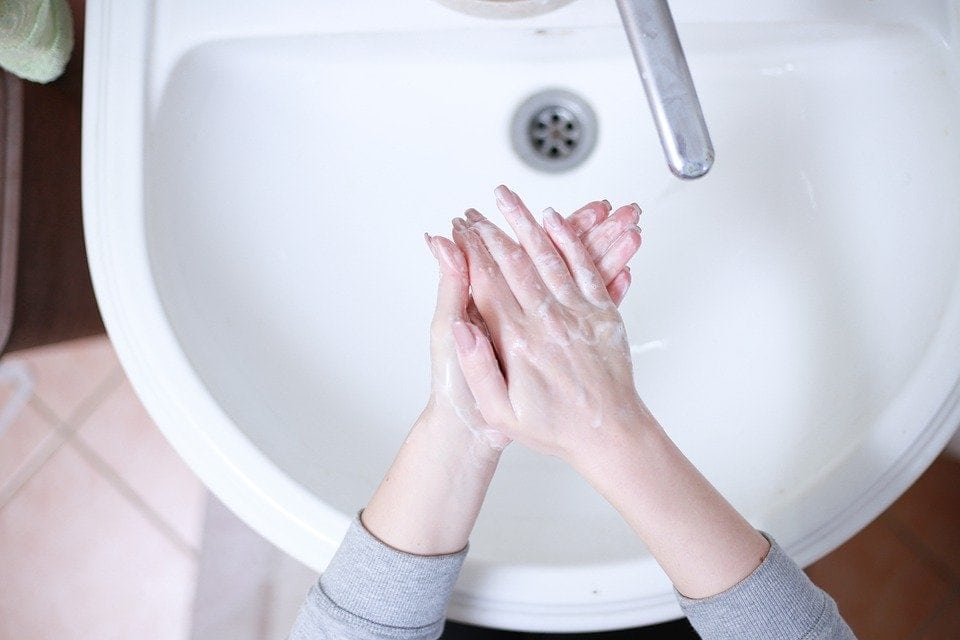
3. Dissolve
Once the glue begins to dry, you will need something stronger than soapy water to remove the glue. Luckily, one of the best ways to remove dry Gorilla Glue is with acetone. Acetone is the main ingredient in common nail polish remover, and many households already have a bottle lying around. If you don’t have some already, it’s easy to find in almost any grocery or dollar store, and it doesn’t cost much. Just make sure you get a nail polish remover that contains acetone.
Acetone can take a few minutes to dissolve the Gorilla Glue, so you’ll need to find a way to soak the affected body part. If you can’t hold the body part in the solution, you’ll need to get a washcloth soaked with acetone to hold over the area. Depending on the amount spilled, the acetone should begin to soften and break up the Gorilla glue in just a few minutes, and you should be able to get most of it off.
4. Exfoliate
Once the acetone has dissolved and removed most of the Gorilla Glue, you may still see or feel a residue that was left behind. The best way to remove this residue is by exfoliating the skin. You can use one of the many commercial brands available, or you can make your own using sea salt, coconut oil, and essential oil.
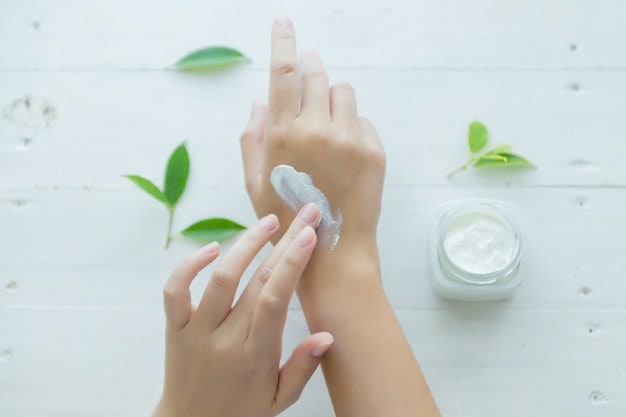
Ingredients
- 1 cup coarse sea salt
- ½ cup of coconut oil
- 5 -7 drop of your favorite essential oil (optional)
Instructions
- Combine the ingredients in a glass bowl
- Store in an airtight container
- Use as needed
If you have dogs or cats in your household, you may want to avoid including essential oils because many of the fragrances are harmful to those animals. Especially tea-tree oil. Use the solution as you would use soap. The coarse sea salt acts as a mild abrasive that will help remove the remaining glue from your skin.
How to Remove Gorilla Glue From Other Objects
It’s very easy to accidentally get Gorilla Glue on a lot more surfaces than just your skin, so let’s take a look at how you can remove it from those surfaces as well.
Remove from Glass
Glass is one of the easier surfaces to remove Gorilla Glue from because it’s not porous, and there’s usually no paint or dye on it. Still, it does scratch easily, so you can’t do much scraping, and abrasives are out of the question.
To remove Gorilla Glue from the glass, you’ll need to soak it in acetone, usually by holding a wet cloth on it for several minutes. Once the glue begins to soften, you can carefully use a razor blade, fingernails, or soapy cloth to remove it. Once you get most of it off, use a soapy washcloth to scrub until it’s streak free.
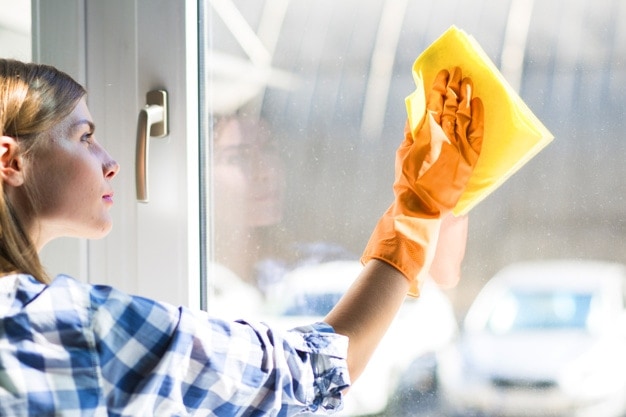
Remove from Metal
Metal is another extremely hard surface that is not porous and can stand up to some scrubbing, so removing the Gorilla Glue is not that hard. However, the metal may have been painted on it, and you may not want to remove the paint with acetone nail polish remover.
It the metal is not painted, you should be able to soak the glue in Acetone the same way you do when removing it from glass, and all of the same steps are required. A faster way to remove glue from unfinished metal may be to use a chisel to remove as much as you can, removing the remainder with sandpaper.
If there is paint on the metal and you don’t want to damage the paint with acetone or sandpaper, you can try to apply heat to the area. Gorilla glue is only effective to about 215 degrees, and if you can raise the temperature that high, the glue will soften and come off easily. A torch, clothes iron, or steam cleaner are the best ways to increase the surface temperature of the metal.
Remove from Fabric
If you get Gorilla Glue on fabric, having it dry-cleaned is usually the best option. If you can’t get it dry-cleaned, you will need to let it dry naturally. Attempting to clean it up while it’s still wet can spread it around and make a bigger mess than when you started. Once the glue is dry, you can try removing it by scraping at it with your fingernail or a plastic pot scraper. You’ll need to be gentle so you don’t stretch or tear the fabric, but it should come off with patience. If it’s white fabric or one where the colors don’t bleed easily, you can try Acetone or lemon juice to soften the glue.
Once you have most of the glue removed, you can scrub some laundry detergent into the spot with a toothbrush and wash it, as long as the fabric is safe to place in the wash.
Remove from Wood
If you are using Gorilla Woodglue, it cleans up easily with a damp cloth as long as its wet, but it can soak into the wood and be difficult to remove once it dries. Once dry, you may find that paint thinner works a little better than the acetone at getting it off the wood. You can also use a chisel to chip away at any large pieces and sandpaper to smooth out any rough areas.
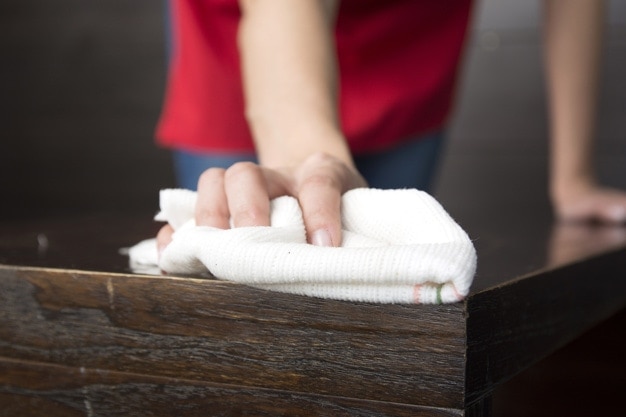
Unstick Fingers
If your fingers become stuck together, you need to remember to stay calm and not try to pull them apart. It’s easy to tear skin with glue on it, which can lead to needing stitches or having a permanent scar. The best thing to do when your fingers get stuck is to soak them in a bowl of acetone and work it in with your other hand. The acetone will not damage the skin and will slowly loosen the grip of the Gorilla Glue.
Separate Glued Wood
It’s common to use Gorilla Wood Glue to glue two or more boards together, but if the glue dries and you are not happy with the joint, you can take the boards apart again by applying heat to the seam. Often, the best way to apply heat is to use a clothes iron. Several cordless models can work perfectly. Place a damp cloth over the seam and iron the area until the glue begins to loosen, and the boards come apart.
Summary
Acetone is usually the best way to remove Gorilla Glue from your skin as well as most surfaces, and if it works for Gorilla Glue, you know it will work for most other glues as well. Acetone is the best way to get it off your skin, and it will get your fingers unstuck as well. The heat will also work well in places where the glue can penetrate the surface, but sometimes the only thing you can do is chisel and sand away as much as you can.
We hope you have enjoyed reading over this short guide, and it has given you some tricks you have not tried yet. If you think it can be helpful to others, please share these four steps to easily get Gorilla Glue off you on Facebook and Twitter.
Related Reads:
- HOW TO WINTERIZE A PRESSURE WASHER (6 QUICK STEPS)
- HOW TO REMOVE SNOW FROM YOUR ROOF (5 POSSIBLE WAYS)
Contents


